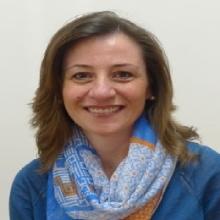
Goals
The solution of applied science problems and the analysis of systems characterized by increasing size and complexity require increasingly accurate, efficient and reliable computational simulations. The main objective of the CDS-group is the development of models, algorithms, and software tools to discover, understand, and model scientific phenomena through the analysis of data produced in experiments and tests and/or through the simulation of the processes that generate them. This allows us to face new multidisciplinary challenges in the field of ICT.
Research Activity
The activity of the CDS-group focuses on solving real problems with methodologies that include computational simulation, scientific modeling, analysis, processing, and management of complex, heterogeneous, and large data sets. These methodologies integrate high-performance computing and distributed computing, with skills from Computer Science, Applied Mathematics, and Statistics. At the same time, by appropriately integrating the CDS-group methodologies with the knowledge of different application domains, a new and more effective perspective is provided for the analysis of real problems and the interpretation of the results.
Research topics include:
- Mathematical Programming and Machine Learning:
Ø Optimization techniques for non-differentiable problems
Ø Mathematical models and optimization methods for complex systems
Ø Machine learning methods for optimization algorithmsMethods for classification and clustering of data in the form of networks.
- Image analysis and processing: analysis, design, and development of methods, algorithms, and high-performance software for processing and quantitative analysis of images and image sequences:
Ø Segmentation and 3D reconstruction (knee bones from MRI, proteins from fluorescence image stacks)
Ø Detection, tracking, classification, tracking, and recognition of moving objects in image sequences (microscopy images)
Ø Extraction and analysis of petroglyphs in archeological images
- Bioinformatics: development and implementation of methodologies for network biology, analysis and integration of omics data, and omics imaging
Application Fields
Logistics, Transportation, Telecommunication, Robotics, Video/image analysis and processing, Medicine, Biology, Genetics, Archeology


TERESA CAPPUCCIO

VALENTINA DE SIMONE

LUIGI DI PUGLIA PUGLIESE

MAURIZIO GIORDANO

ILARIA GRANATA

MARIO ROSARIO GUARRACINO

LUCIA MADDALENA

MARCELLO SAMMARRA
- CEINGE – Biotecnologie Avanzate
- CNR IBB, IBPM, ICB, IEOS, IGB, ISASI
- Esaote S.p.A.
- Fondazione IDIS – Città della Scienza
- GNCS-INdAM
- Istituto Nazionale Tumori – IRCCS – Fondazione G. Pascale
- National Research University Higher School of Economics (RU)
- Ospedale Policlinico San Martino – Genova
- Sapienza Università di Roma
- Università della Calabria
- Università della Campania Luigi Vanvitelli
- Università di Cagliari
- Università di Cassino e del Lazio Meridionale
- Università di Firenze
- Università di Napoli “Federico II”
- Università di Napoli “L’Orientale”
- Università di Napoli Parthenope
- Università “Magna Grecia” di Catanzaro
- University of Florida, CAO (USA)
- University of Sheffield (UK)
Projects
– CNRBiOmics, National Research Center in Bioinformatics for Omics Sciences, https://www.cnr.it/en/node/16209, PIR01_00017.
– “CNRBiOmics, National Research Center in Bioinformatics for Omics Sciences – Strengthening of human capital”, CIR01_00017.
– BiBiNet: Big Biocancer Networks – Analysis of biological networks for markers identification and active molecules repositioning, https://www.unicas.it/siti/dipartimenti/dipeg/ricerca/ricerca-nazionale.aspx.
– MATH4CHARM: A mathematical approach to inverse problems arising in cultural heritage preservation and dissemination, https://prin.unica.it/math4charm/
